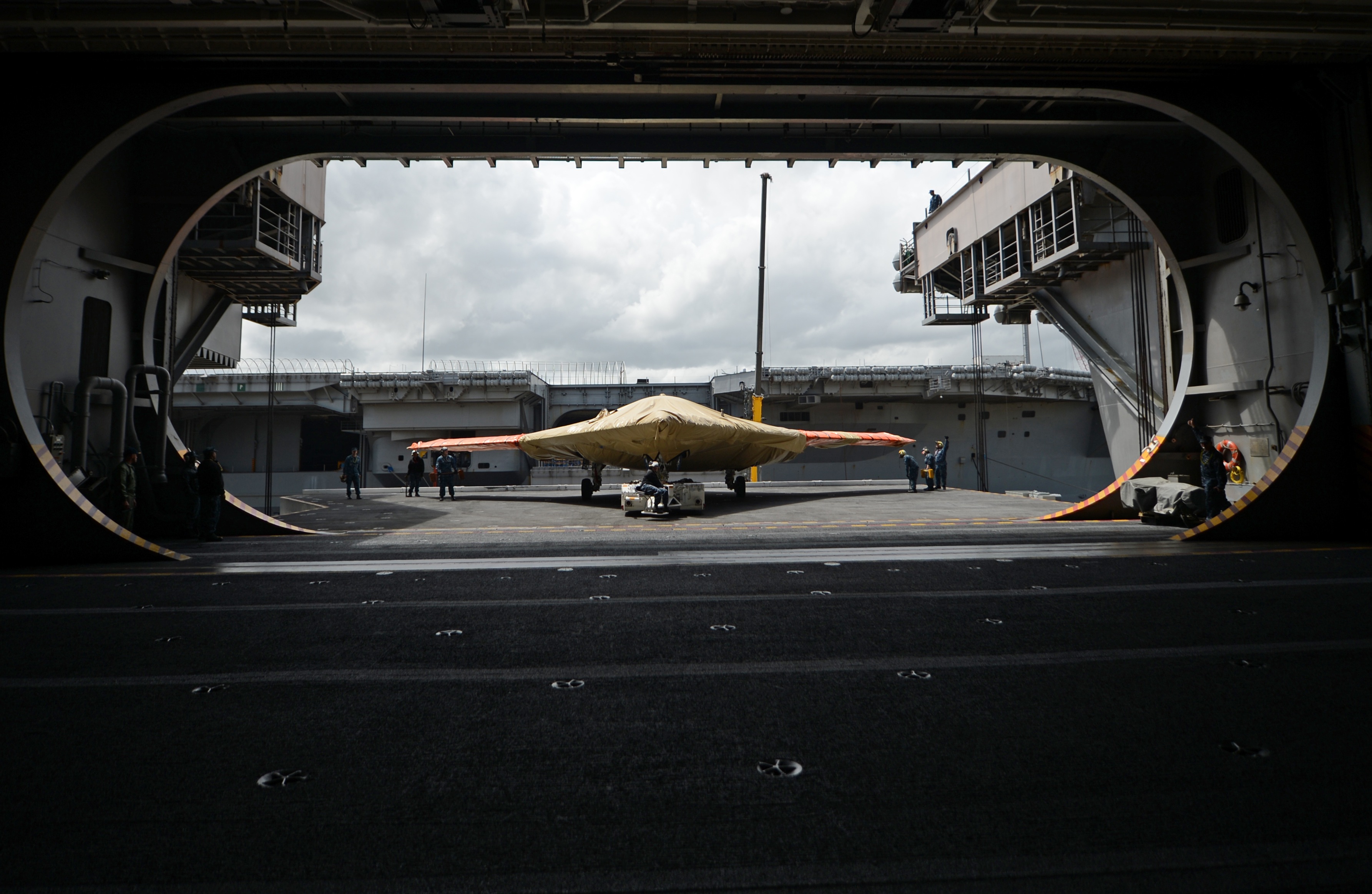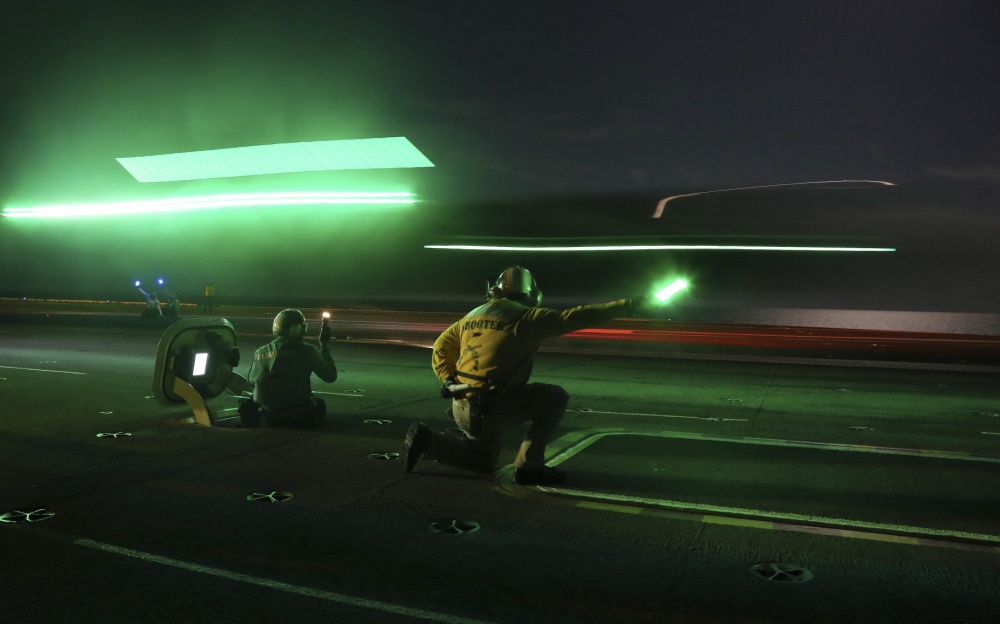
THE PENTAGON – The Navy’s MQ-25A Stingray unmanned aerial tanker project, previously described as a rapid acquisition program for the department, is now not set to be integrated into the air wing until 2026, officials said on Monday.
The Navy is proposing spending $719 million on research and development for the MQ-25A and now anticipates purchasing the first four aircraft in 2023. The service doesn’t expect to reach initial operational capability until Fiscal Year 2026, Rear Adm. Brian Luther, the deputy assistant secretary of the Navy for budget and the director of fiscal management on the Chief of Naval Operations staff, said during a Fiscal Year 2019 budget briefing Monday.
The Navy wants unmanned vehicles to launch and recover from an aircraft carrier at sea, just like any manned aircraft, and meet piloted jets at range for refueling during mission. Previously, the Navy announced aircraft carriers USS Dwight D. Eisenhower (CVN-69) and USS George H.W. Bush (CVN-77) would be the first to operate the MQ-25A.
The request for proposal for the MQ-25A was issued to industry in October. The service at the time did not indicate when the Stingrays would enter the fleet, but USNI News understands Chief of Naval Operations Adm. John Richardson wants the UAVs on carrier decks as early as 2020.
The Navy has not responded to USNI News questions regarding the budget request’s indication that the MQ-25A program has been delayed.
Overall, the Navy wants to spend $19 billion on purchasing airframes in FY 2019, a proposed funding increase of 28 percent from last year’s request of $14.9 billion. The Navy’s proposal represents 34 percent of the Department of Defense’s planned $55.2 billion in spending on both piloted and unmanned aircraft for all military branches.
The Navy’s plan to purchase 120 airframes in FY 2019 represents a 32-percent jump from the number of aircraft the service proposed buying in 2018.
A year ago, the service proposed only a modest aviation buy, actually lowering its request by about $1 billion from the FY 2017 request.

The Navy’s planned purchase of nine Navy-variant Lockheed Martin F-35C Lighting II Joint Strike Fighters more than doubles the Navy’s 2018 request of four such JSFs. Meanwhile, the Navy’s plan to purchase 20 Marine F-35B variant matches its 2018 purchase plan.
After the increased F-35 spending, the next largest aviation purchase increase is for aircraft modifications. In 2019, the Navy plans to spend $3.2 billion, a 19-percent increase from the $2.7 billion the Navy proposed spending on modifications in 2018.
In 2019, the Navy plans to purchase the following aircraft:
- 29 F-35 fighters (20 F-35B Marine variant and 9 F-35C Navy variant) with a request of $3.9 billion
- 24 Boeing F/A-18E/F fighter jets, with a request of $2 billion
- 10 Boeing P-8A Poseidon aircraft, with a request of $2 billion
- 4 Northrop Grumman E-2D Advanced Hawkeye carrier-based early warning aircraft, with a request of $952.7 million
- 7 Bell-Boeing MV-22 Osprey tilt-rotor aircraft, with a request of $1 billion
- 25 Bell Helicopter AH-IZ Viper and UH-IY Venom Marine Corps attack and utility helicopters, with a request of $878.9 million
- 8 Sikorsky CH-53K King Stallion Marine Corps heavy-lift helicopter, with a request of $1.6 billion
- 6 Sikorsky VH-92A Presidential Helicopter, with a request of $894 million





